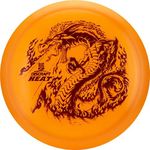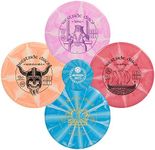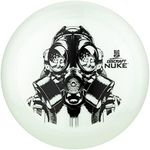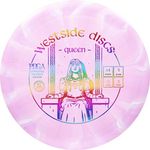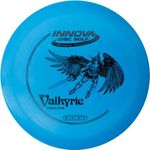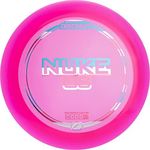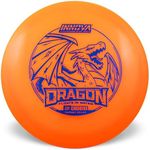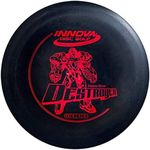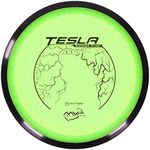Buying Guide for the Best Distance Driver Disc Golfs
Choosing the right distance driver for disc golf can make a big difference in your game, especially if you want to maximize your throwing distance and accuracy. Distance drivers are designed to fly far and fast, but picking the right one depends on your skill level, throwing style, and the conditions you usually play in. Understanding the key specifications will help you find a disc that matches your needs and helps you improve your performance on the course.SpeedSpeed is a number that indicates how fast the disc needs to be thrown to perform as intended. Higher speed discs (usually rated 10-14) are designed for experienced players with strong throws, while lower speed drivers (7-9) are more forgiving and easier for beginners to control. If you’re new or have a slower arm speed, start with lower speed drivers to get better results and gradually move up as your technique improves.
GlideGlide measures how well the disc stays in the air. Discs with higher glide (rated 5-7) will float longer and are great for getting extra distance, especially for players who don’t throw very hard. Lower glide discs (rated 3-4) are more predictable and less affected by wind, which can be helpful for advanced players or in windy conditions. Choose higher glide if you want more distance with less effort, and lower glide if you prefer control.
TurnTurn describes how much the disc will curve to the right (for a right-handed backhand throw) during the early part of its flight. Discs with more negative turn (-2 to -5) are easier to throw straight or even get a rightward curve, which is helpful for beginners or players with less power. Discs with less turn (0 to -1) are more stable and require more power to fly straight. Pick a disc with more turn if you’re just starting out or want help correcting a natural fade to the left.
FadeFade is how much the disc will hook left at the end of its flight (for a right-handed backhand throw). High fade discs (rated 3-5) finish with a strong left curve, which is useful for certain shots or windy conditions. Low fade discs (rated 0-2) finish straighter, making them easier to control for long, straight throws. If you want a disc that finishes straight, go for low fade; if you need a disc that reliably finishes left, choose higher fade.
Plastic TypePlastic type affects the grip, durability, and flight of the disc. Softer plastics offer better grip, especially in wet conditions, but may wear out faster. Harder plastics last longer and maintain their flight characteristics, but can be more slippery. If you play often or in rough terrain, choose a more durable plastic. If grip is your main concern, especially in cold or wet weather, go for a softer, grippier plastic.
WeightDisc weight influences how far and how easily you can throw the disc. Lighter discs (150-165 grams) are easier to throw for beginners and players with less arm strength, and they tend to fly farther with less effort. Heavier discs (170-175 grams) are more stable in the wind and offer more control for experienced players. If you’re new or want more distance, start with a lighter disc; if you need more control or play in windy conditions, try a heavier one.

